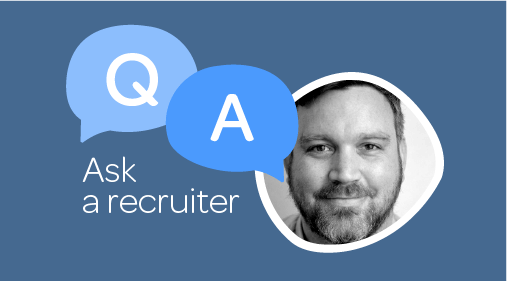How do you design the recruiting process at a company as its new Head of Talent?

My background as a Head of Talent is in a series of startups which generally don’t have any hiring process in place – you’re starting with a completely blank canvas when designing an effective hiring process.
These companies don’t have an applicant tracking system, nor do they have a full scoring system or standard way of making decisions. Hiring is pretty much done by the founder who’s meeting people and going on gut instinct – which is great and will get you through 10 or 15 hires pretty easily. But when you’re trying to go from 20 to 60 to 70 to 80 people, you’ll need some very careful planning.
Start with the goals
One of the biggest factors in talent acquisition roles is managing requirements; expectations versus reality. So, the first thing I do is understand what the plans are. I’m interested in what the company is trying to achieve, its business objectives, and how hiring fits into that.
By understanding those, you’ll be able to spend your efforts in the right places. If, for example, the business is focused on delivering product and it needs to hire numerous engineers in the next three months, your focus will be on ensuring the engineering hiring process is really slick. It’s about building the right process for the business you’re in. Some businesses have a slower recruitment process and they need to make sure it’s sustainable. But if you’re looking at a very high-growth business, they may want to reduce their time to hire or their overall hiring cycle.
When you’ve just joined a new business and you’re learning its objectives, you may find that you’re behind schedule. You’re spinning the wheels very, very quickly just to catch up and get yourself some breathing space. Once you have that, you can start to put a more strategic plan in place.
Build the hiring plan
I think this is one of the most exciting parts of the job. You get to see everything that you’ll have to deliver for the year. Hiring plans ought to be running about three months ahead, so you can be really structured about how you’ll do things.
That’s when you start to look at processes. You’ve got to immerse yourself within the organization and understand how people work, what the existing hiring process is and where the strengths and weaknesses lie. You could have people that aren’t particularly competent in interviewing and you might need to train them. One department could have increased hiring needs while another might want to make just a couple of key hires. You need to learn what’s going on and tailor your plan based on the strengths and weaknesses you find.
Hiring isn’t a one-person job
While you’re doing all this – learning about the business objectives, crafting a plan, identifying weaknesses – you should remember: you’re not alone. Your job will be so much easier, and much more effective, if you involve other people in the organization.
I always involve those who’re actually doing the hiring. It’s not just the founder anymore, many team leaders will need to increase the time they spend in evaluating and selecting candidates. And while we, as talent acquisition professionals, have overall hiring accountability, the ownership of the process should be placed with the hiring managers. That’s because:
- They’re the people who’ll be reaping the results of what we do.
- They’ll be more engaged in the process if you involve them in the planning phase.
So, you should be there to guide and support hiring managers and help them in designing an effective hiring process. And, you shouldn’t stop there. It’s just not scalable for one person to own every single hiring process on a global scale. If the hiring manager is the only one who does the final stage interviews, then you’ve created an instant bottleneck for yourself. The wider you can make the team, the easier it’ll be to scale and the better your hiring decisions will be.
Be sure to involve team members in candidate assignments. Their work is highly relevant to what the new hire will be doing. If you’ve got engineering teams, for example, they should be involved in deciding what your coding tests should be, or how you’ll mark the tests.
And then, you need to make sure everyone on your team can hold an effective interview.
Everyone interviews
I train teams on how to run interviews and how to learn as much as possible about candidates. Interviews are normally only an hour long and you need to use that time wisely.
So when I talk to people about interviewing, I’m always quite keen to teach them to break down the qualities they’re looking for, so that their hiring process covers each individual element of the role. Rather than saying someone’s nice, you want interviewers to say “I’m satisfied this person really knows about product management.” Then another interviewer might say that the candidate knows a lot about the sector we’re working in. That’s how the team can evaluate candidates based on the sum of the parts.
Interviews should be positive experiences
Some companies can be quite combative in their interview styles, asking candidates to prove themselves. I think that needs to change because candidates have many options now. Why not build your interviews to be positive and find where that person shines instead?
Be flexible. Often, interviews are transactional: asking a question, getting an answer. That should definitely be part of the interview, because that’s how you get information, but if you only do that, there are other things you’re missing. You need to find questions that are interesting for candidates. You’ll get candidates to relax and drop their guard – and bring out the best in them, which, I would argue, is actually who they are day to day. That’s the real skill to being a great interviewer.
Culture is important
Everyone’s talking about doing culture interviews, but I actually think that a candidate’s personality will come across while they’re answering other, job-related questions. Hiring teams should be able to recognize culture fit when they see it. That’s why we need to be specific about what culture fit is and what qualities we’re looking for before we start interviewing.
Of course, asking some culture-related questions is useful too: for example, I always ask people what they’re passionate about. That’s really interesting because I often work at companies where people are incredibly passionate about things outside of work. They love their job, but they have lots of other things going on. You could learn a lot about someone by what they’re interested in, how they go about learning a skill, and if you’re actually looking at someone who has achieved something in their own time.
Tailor your methods
There isn’t a one-size-fits-all approach to recruitment. At SuperAwesome, my current company, we’re trying to make sure that we’ve done a thorough assessment of candidates. Our engineering hiring process has a specific number of steps that candidates go through. However, if we need to be more flexible around the more unique hires that we do, then we might have an additional stage or change a stage around.
I like to think about how are we going to see the best in candidates and if that means that we should change our interview process to understand them in more detail. Maybe we’ll decide to ask candidates to give us a presentation around a certain topic to assess their ability. Everyone is unique and, while we have a process that’s agreed upon from the start, if we need to change direction, we will.
Brace yourself for unforeseen change
If you work in recruitment and talent acquisition, you must be used to things changing on a daily basis. We should be the rock everyone else will depend on when they’re worried their plans have changed or their plans aren’t working.
That’s when you need to come up with solutions. And there are times when you’ll tell people that things can’t be done, but generally you need to look for ways that you can do something. And if fundamental things are changing, like the hiring plan, you should be in front of that and know that it’s going to change before it officially does.
Mingle and learn
You need to network through an organization and be really, really tuned into what’s going on. You should have a line of communication that says “listen, we can’t officially say this yet, but we think this might be happening.” Then, it’s your job to start making other plans. Because, normally, changes don’t happen overnight, they take weeks or months and you’ve plenty of time to catch up. But you won’t be able to do that if you sit in isolation.
What I do is actively speak to hiring managers in regular meetings. I also actively speak to our executive team. That’s how you have access to information that other people in the company might not have. There should be a high level of trust there.
Trust is key
Personally, I’ve already been a Head of Talent quite a few times. I’m standing from a point of experience and knowledge that I gathered over the years, so it’s easier for people to trust me in recruiting matters.
But when I first started, I found it was important to just give sensible advice. Listen and make sure you’re delivering what you’re promising. Make yourself a positive person to be around and showcase your competence by asking the right questions or making useful observations. You could say, for example, that you noticed the hiring plans tend to change halfway through the year so the company should anticipate that in the future. You’ll bring a lot of value, and earn trust, if you try to bring those conversations forward and get ahead of the curve.
Nick Yockney is currently the Head of Talent at SuperAwesome. He has lead the Recruiting and People function in tech startups for six years and has a 10-year background as an agency recruiter. He also runs DBR (the well-known community for In-house Recruiters and HR professionals).




